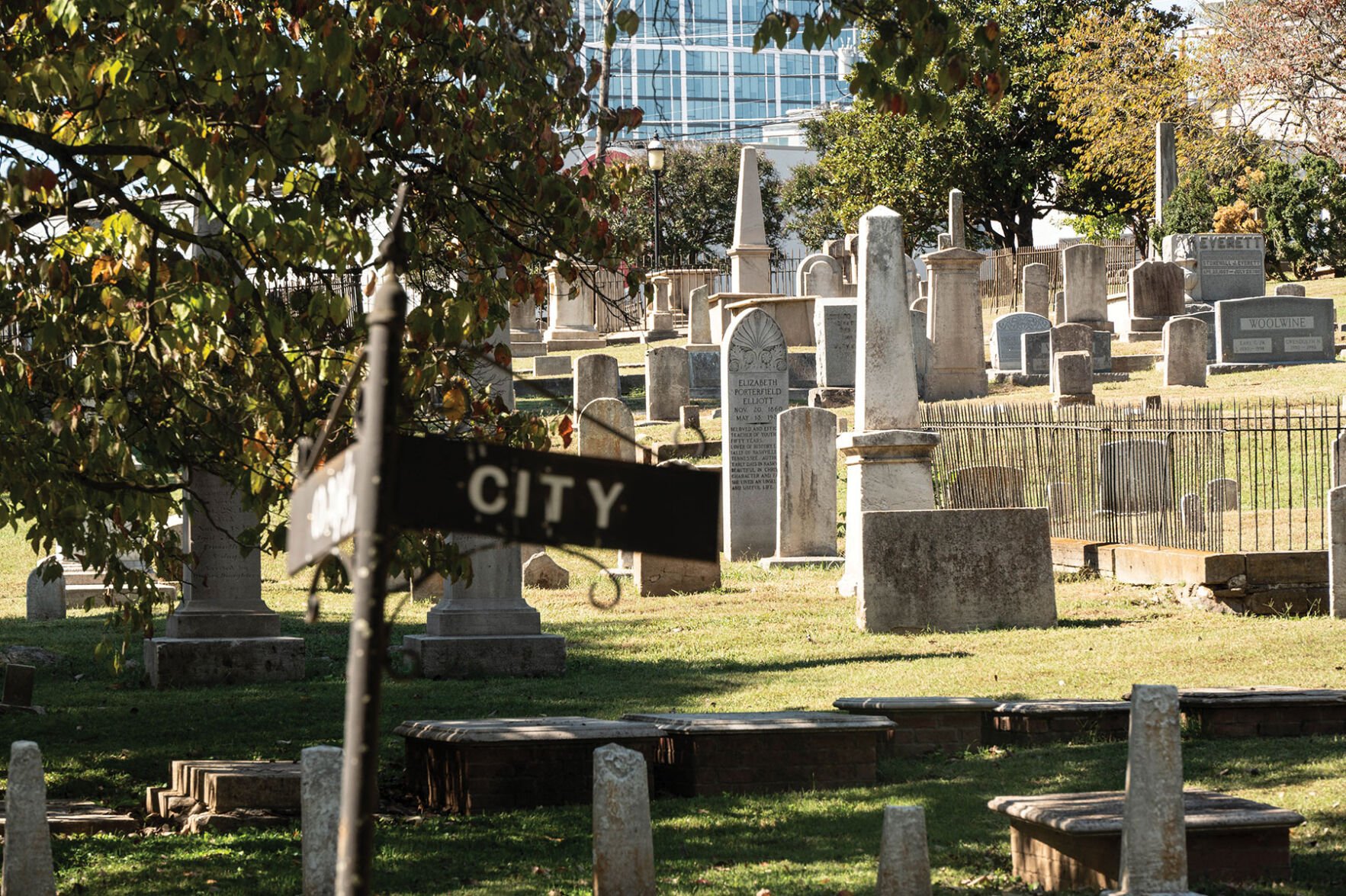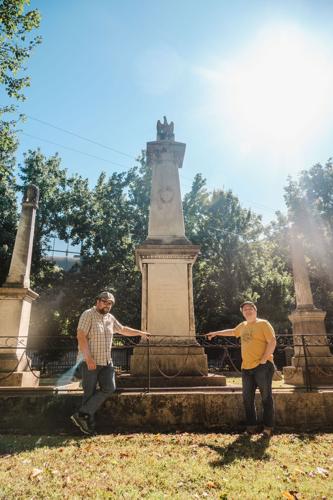The Nashville City Cemetery is commonly visited by tourists looking for the nearest green reprieve from Lower Broadway.
The cemetery was established just one mile from downtown back in 1822, with the idea that the city would never spread that far. All of the people originally buried where Public Square Park is today, about a mile-and-a-half to the north, were relocated to the City Cemetery. By 1850, more than 11,000 were buried at the site.
The cemetery is now a Metro park with a full-time staffer in Bryan Gilley, and the city wants to see people use the space for walks and picnics. (Take a page from the GOTHBATS — a goth social group profiled by the Scene last year that hosts events in cemeteries.) The City Cemetery even held its inaugural ice cream social this year. The cemetery is also asking for $8 million from the city for improvements to gravestones, light fixtures and its stone fence, along with other restoration efforts.
“It’s a place just to honor the dead, but the city wants people to use the cemetery,” Gilley says. “It is one of the few green spaces on this side of downtown.”
Southern goths look to set an example for alternative newcomers
Unlike other cemeteries in town, the Nashville City Cemetery has only one or two burials per month, so it’s not especially likely you’ll come across mourners should you choose to enjoy the grassy space. But visitors should know that just because there’s no tombstone does not mean there isn’t a person buried there. Only about 4,000 of the roughly 20,000 graves are marked. Gilley and the Nashville City Cemetery Association have used ground-penetrating radar in partnership with Vanderbilt University on part of the site to locate unmarked graves, with hopes to survey the entire site in the future.
Nashville City Cemetery was established as a rare desegregated cemetery in the pre-Civil War South. While it became more segregated after the war, the site hosts city and state leaders alongside people who were enslaved at the time of their death.
“In 1822, we’re still in the midst of slavery,” Gilley tells the Scene. “There’s the wealthiest white citizens buried here along with people that were not free. I don’t think you’d find a place that tells Nashville’s history more diversely than this. It’s a full representation of the whole city from every spectrum, every belief — everybody’s here. It really is an outdoor museum.”

You’ll find Revolutionary War veterans and James Robertson, who’s considered a founding father of Nashville and of Tennessee. There are members of the Grundy and Polk families; Confederate Gen. Felix Zollicoffer and famed songwriter Harlan Howard, who wrote Patsy Cline’s “I Fall to Pieces,” share a plot. Current members of the Fisk Jubilee Singers come yearly to perform at the graves of two of the historic group’s original members. There’s also a grave for someone who died during the construction of the Tennessee State Capitol, with a gravestone designed by architect William Strickland and featuring masonry tools. There are 16 Nashville mayors there. Two more Nashville mayors plan to be.
The Nashville City Cemetery is a nonprofit supported by membership and donations, as well as volunteers who help clean and repair graves. (The GOTHBATS are among those volunteers.) The cemetery has also often been the subject of vandalism. Gilley and Oliver Arney, president of the Nashville City Cemetery Association, want people to know they can just walk in from dawn to dusk. That is to say, people don’t need to sneak in at night.
“The more people we get out here, the more we can teach people, and the less wrong activity we have,” Gilley says.
In October, the cemetery hosts the tours Tales From the City Cemetery and Murder & Mayhem, but tours are also available upon request throughout the year.
“I think if you ask historians what we’ve lost the most in the last 100 years, it’s probably that sense of culture and community, and that’s something we want to preserve,” Arney says. “It’s really cool that you can come to a site and you can say, ‘I’m new to Nashville,’ or even, ‘I’m visiting Nashville, but I want to feel connected to a place.’ You can come somewhere like this and feel that connection.”
Exploring Nashville’s ghost tourism industry, chatting with a historian about the bodies buried in our state Capitol and much more








